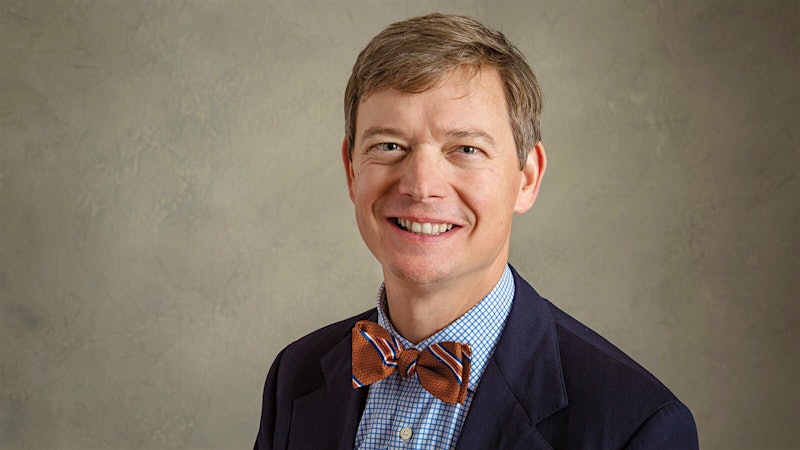What Makes a Wine Ageworthy?
A few weeks ago, during the discussion from my column "What Syrah Really Needs" (short answer: time in the cellar), Robert Hight asked, "What is it that you sense in a wine that makes it ageworthy?" He added, "My experience in my cellar is only one or two out of 10 wines I open have benefited from extended aging."
This is what I call a "nub question," which is to say, one of those fundamental inquiries about fine wine that we all confront, consciously or otherwise. Anyone who accumulates more wine than he or she intends to drink in, say, a month's time, runs smack into this elemental feature of wine loving—wine living, you might say.
This business of aging wine for a better tomorrow proceeds from a single premise, one that often goes unstated but is nevertheless ever-present: the concept of transformation. There is no reason to age wine except in the belief that it will transform. This is not the same, mind you, as merely enduring.
Today, most wines will endure for varying spans of time if kept in a cool space. This endurance will vary with the grape variety and the region where it was grown, but nearly all wines today are well-made, and it's amazing how sturdy many of them are.
Yet these same (simple) wines, though capable of enduring, won’t actually change. If red, they may get smoother, shedding whatever tannins they had. If white, they'll slowly oxidize into oblivion. But nowhere along the continuum of youth to old age will they have become dramatically, dimensionally different from what they were when first made. They do not transform.
Now, back to Mr. Hight’s inquiry: "What is it that you sense in a wine that makes it ageworthy?" First comes this business that a wine can transform.
Most of the time your "sense" in this matter is intellectual: You're told that such-and-such wine gets much better with aging. I don't think anybody tasting a young grand cru Chablis or a great Savennières could possibly imagine what these wines can become after 10 or 15 years of aging in a cold cellar, so caterpillar-to-butterfly are their respective transformations.
Red wines tend to be less extreme, if only because they bring so much fruit with them in youth. You may not be able to imagine what, say, a truly mature Barolo or Gattinara might taste like after 15 years of aging, but the young fruit gives at least a hint of what might be in the wine's future.
With these examples you're dealing with traditional wines that have long histories of both appreciation and cellaring. You have reason to believe—thanks to reports from the old-bone contingent—that these wines will age well, which is to say, transform.
This is not the same, by the way, as knowing which particular producer or vintage might be best for that long haul. More about that in a moment.
Today, however, there's a new challenge: What about wines that have no significant track record? Will Malbecs from Argentina, which seem so promising, reward cellaring? Will they transform? Or will they merely smooth out and eventually just exhaust their abundant fruit without becoming anything different, let alone greater, than when they began?
The list of such wines today is vast. There’s a huge array from California, Oregon, Washington, New Zealand, Australia, Chile and South Africa that are unknown quantities. Even in Spain, Greece, Portugal, Italy and France, whole new areas have been revived or radically modernized to such a degree (Languedoc, Rias Baixas, Priorat, Puglia, Sicily, nearly all of Greece) that we cannot confidently extrapolate from past efforts what today's wine-modernized future holds. We can only guess.
This is the key word in Mr. Hight's question: "What is it that you sense ... ?" That's it, isn't it? Today, with all these new wines, we can only sense a wine's aging possibilities.
When I was living in Argentina this past winter, it was this very question that I had uppermost in my mind when visiting Malbec producers. Are these wines worth cellaring? Will they transform? Not surprisingly, producers insisted that Malbecs deserved additional aging.
But their certitude became less assured when confronted with the question of transformation. It seemed to me that they didn't really know. Today's Malbecs, made in a modern fashion and with low yields, are too new to Argentina's wine history for nearly anybody to be certain about the scope of their transformational capacity.
So what do I sense—which is to say, intuitively seek—with such wines, whether from Argentina or California or Italy or any other locale?
You would think that the first order of business is grape variety, but it's not. Although grape variety is hardly unimportant, it's not necessarily the determining factor in a wine's ability to cellar successfully and transform.
Many grape varieties have not, until very recently, been lavished with the care and consideration that they deserve, either in the vineyard, the winery, or, finally, peoples’ cellars. I would include among these varieties Aligoté, Aglianico, Barbera, Cabernet Franc, Chenin Blanc, Gamay Noir, Melon de Bourgogne and Sémillon.
We've had some "messages," you might say, such as Sémillon from Australia’s Hunter Valley; some great Gamay Noir from Morgon or Moulin-à-Vent; the occasional impressive Melon de Bourgogne from Muscadet; and an increasing number of profound Barbera d'Alba and Barbera d'Asti.
Still, too few producers are sufficiently committed and exacting. And equally too few wine lovers have pursued these and other wines as assiduously as they might (or as generously in what they’re willing to pay), to say nothing of lavishing on them the necessary cellaring. All of this is beginning to change (particularly with Barbera, for example), but it's still in the early days.
Like all experienced tasters, I look for what the French call "harmoniousness," which is another way of saying that everything should be in balance.
I look hard for a sense of originality. The wine has got to have something to say—or at least suggest that it does.
Personally, I prefer single-vineyard wines. I like the intellectual tidiness of them. Also, since site is so critical to character, it offers insight into potential reliability for future vintages.
In addition to a rewarding site, other features necessarily must be present: good acidity, clean winemaking, an absence of excessive oak, and—it has to be said—a decent cork or a good screw cap.
All of these elements are important. But none of them will carry the (long) day without midpalate density.
Midpalate density is the key "seek" for me, the indispensable element. Wines, like trees, die from the inside out. A wine without a dense midpalate core has little chance of enduring, let alone having sufficient stuffing for substantive transformation. (A young, thin Chablis from overcropped vines becomes, over time, a scrawny, screechy older wine with depressingly little to say.)
What about Malbec, you ask? I came to the conclusion—not with certitude mind you, but only an intuitive sense—that Malbecs from Argentina with dense midpalates will indeed transform. A vertical tasting of multiple vintages of Malbecs from Achával-Ferrer, for example, demonstrated to me a significant and worthy transformation after eight to 10 years from the vintage.
But these wines are at the pinnacle of Argentine Malbec, made from very old vines and offering magnificently dense midpalates. Whether one can legitimately extrapolate from such "pinnacle wines" is a leap. But yes, I think it will be true for other top-rank Malbecs as well.
In looking at the wines I've actually purchased (in case quantities, I might add) for my own cellar, I can tell you that you can learn all about midpalate density (as well as superb winemaking and the virtues of great vintages) from wines such as Domaine Leroy Bourgogne Aligoté 2006, which will, in a single sip, persuade you of the potential of the underrated Aligoté grape variety.
Ditto for such wines as Catherine et Pierre Breton Bourgueil Clos Sénéchal 2005 (Cabernet Franc) and Királyudvar Tokaji Sec 2006 (Furmint), both of which I celebrated as some of my "wines of the year" in 2008. The midpalates on both wines are simply stunning, as is the deferential winemaking.
Among Malbecs, I'm planning on laying in a case of 2008 Colomé Estate when it arrives in this country, as I believe it's the best vintage yet from this remarkable high-elevation property in Argentina's Salta province.
Among Muscadets, I've previously praised various vintages from producers such as Domaine de l'Ecu, Domaine de la Pépière and Château de Chasseloir, among others. Just the other night I cracked open a single-vineyard Muscadet from Domaine de la Pépière, the 2003 Clos des Briords, and it was thrilling: vibrant, tingly with minerality and, yes, transformed from its original "closed fist" flavor reluctance.
These bottlings, among the many others I’ve tasted over decades of cellaring wines, buttress my conviction that midpalate density is the prime prerequisite. Every Pilates instructor will tell you that core strength is critical. And who wants to argue with them?










